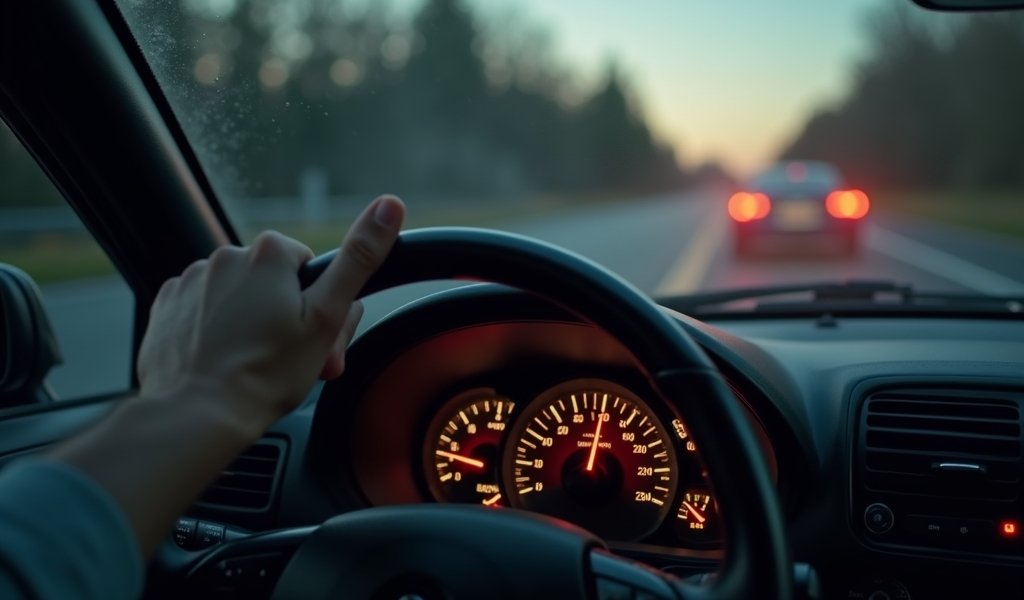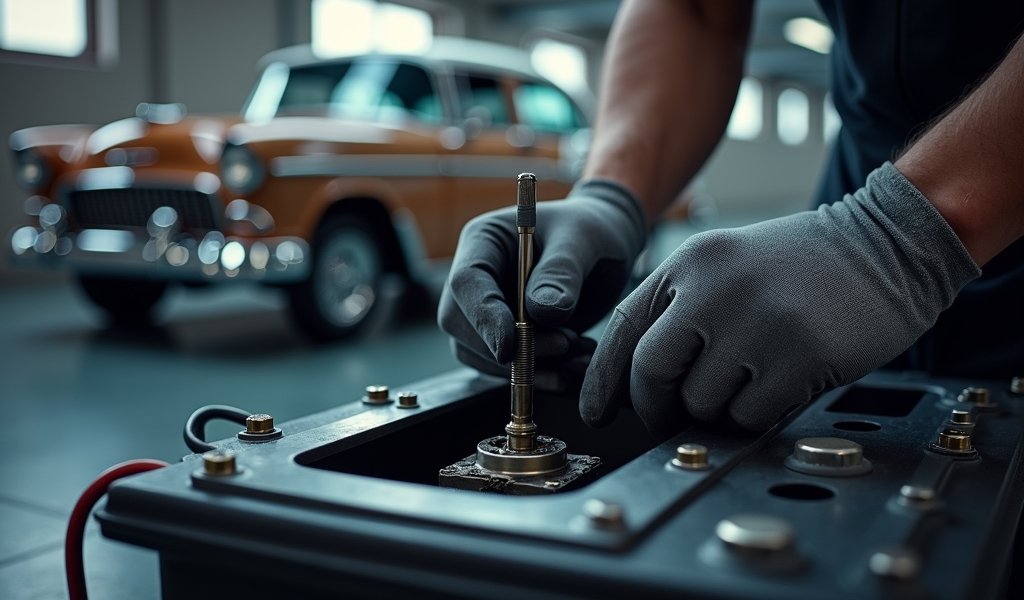Overview
This article provides a detailed guide on calibrating fuel level sending units, explaining how these devices connect your fuel tank to your dashboard gauge and offering step-by-step instructions for diagnosis, calibration, and troubleshooting. It emphasizes safety precautions when working with fuel systems and includes maintenance tips to extend sending unit lifespan, highlighting that proper calibration prevents unexpected empty tanks and ensures accurate fuel level readings.
Table of Contents
- Understanding Fuel Sending Units
- Signs Your Fuel Sender Needs Calibration
- Safety Precautions Before You Begin
- Tools You’ll Need
- Step-by-Step Calibration Process
- Troubleshooting Common Issues
- Maintenance Tips for Sending Units
- Conclusion
- Frequently Asked Questions
Understanding Fuel Sending Units
Ever wondered how your fuel gauge knows exactly how much gas is in your tank? That’s where the fuel level sending unit comes in. As a mechanic with over 20 years of experience, I’ve seen countless drivers puzzled by erratic fuel gauges, and the culprit is almost always a poorly calibrated sending unit.
Think of the fuel sending unit as the messenger between your gas tank and your dashboard gauge. It’s typically mounted inside your fuel tank and consists of a float connected to a metal arm that pivots as fuel levels change. This movement changes the electrical resistance, sending different signals to your gauge depending on how much fuel is present.
Most vehicles use one of three sending unit types:
- Float arm resistors (most common) – uses a float that rides on the fuel surface
- Capacitive sensors – measures fuel levels using electrical capacitance
- Ultrasonic sensors – bounces sound waves off the fuel surface for precise readings
When calibrated correctly, these units ensure your gauge gives you accurate readings. When they’re off, however, you might find yourself unexpectedly running on fumes or filling up a tank that’s already half full. Proper sensor calibration is essential for any vehicle system, whether it’s your throttle position sensor or your fuel gauge.
Signs Your Fuel Sender Needs Calibration
Your vehicle has ways of telling you when the fuel sending unit isn’t reading correctly. Here’s what to watch for:
- Fuel gauge jumps around erratically when driving on smooth roads
- Gauge reads “full” long after you’ve been driving
- Gauge suddenly drops from half-full to empty
- Vehicle runs out of fuel while gauge shows there’s still plenty left
- Gauge never reads completely full, even after a fill-up
I remember a customer who drove a 2007 Ford Explorer that would show half a tank for days, then suddenly drop to empty without warning. After checking, we discovered the sending unit’s float arm had become bent, causing it to stick at certain fuel levels. A simple calibration fixed the issue and saved her from being stranded again.
If you’re experiencing similar symptoms, it’s likely time for a fuel level sending unit calibration. This isn’t just about convenience – an inaccurate fuel gauge can leave you stranded or lead to fuel pump damage from regularly running near empty.

Safety Precautions Before You Begin
Before diving into calibration, let’s talk safety. We’re dealing with fuel systems here, and gasoline is highly flammable. I’ve seen enough preventable accidents to emphasize this point strongly.
Always follow these safety guidelines:
- Work in a well-ventilated area – fuel vapors are both toxic and flammable
- Disconnect your vehicle’s battery before starting
- Relieve fuel system pressure according to your vehicle’s service manual
- Keep a fire extinguisher within reach
- No smoking, open flames, or spark-producing tools in the work area
- Wear safety glasses and fuel-resistant gloves
I once had a customer who skipped the “disconnect the battery” step and created a spark while working on his fuel sender. Luckily, he wasn’t seriously injured, but his eyebrows took months to grow back. Don’t take shortcuts with safety.
Remember that fuel systems in modern vehicles can maintain pressure even after the engine is off. Consult your vehicle’s service manual for the proper procedure to relieve this pressure before opening any part of the fuel system. This is similar to safety precautions you’d take when working on your traction control system, where electrical safety is paramount.
Tools You’ll Need
Successful fuel sending unit calibration requires the right tools. Here’s what you’ll need to have on hand:
- Digital multimeter (ohm setting)
- Vehicle-specific service manual
- Basic hand tools (screwdrivers, socket set, etc.)
- Clean rags
- Safety equipment (gloves, glasses)
- Small container to catch fuel spillage
- Notebook and pen to record measurements
The service manual is particularly important because sending unit specifications vary widely between vehicle makes and models. Some units read 0 ohms when full and 90 ohms when empty, while others might use a completely different range. Without knowing the correct specifications, you’re just guessing.
I recommend getting a factory service manual rather than a generic repair guide. The detailed specifications will save you hours of frustration and prevent damage to your fuel system components. According to a study by the National Institute for Automotive Service Excellence, using proper documentation during fuel system repairs reduces the chance of errors by over 60%.
Step-by-Step Calibration Process

Now for the main event – the calibration process itself. I’ll break this down into manageable steps that even a first-timer can follow.
Accessing the Sending Unit
First, you need to locate and access your fuel sending unit. In most vehicles, it’s accessible through one of these methods:
- Under the rear seat (common in sedans)
- Through an access panel in the trunk or cargo area
- By partially lowering the fuel tank (common in many trucks and SUVs)
Always refer to your vehicle’s service manual for the exact location and access method. Some vehicles make this easy with a simple access panel, while others require removing the fuel tank – a job that might be best left to professionals.
Testing Current Values
Once you’ve accessed the sending unit:
- Disconnect the wiring harness from the sending unit
- Set your multimeter to measure ohms (resistance)
- Connect the multimeter leads to the sending unit terminals
- Record the current resistance reading
Next, you’ll need to establish a baseline. If possible, take measurements with the tank at different levels (empty, 1/4, 1/2, 3/4, and full). This gives you a complete picture of how your sending unit is currently performing across its range.
Making Adjustments
The adjustment method depends on your sending unit type:
For float arm types:
- Carefully bend the float arm to adjust its position relative to fuel level
- A small bend goes a long way – make minor adjustments
- Test after each adjustment
For electronic sending units:
- Check if your unit has calibration points or dials
- Adjust according to manufacturer specifications
- Some units may require special tools or software
The key is patience and precision. I once spent three hours calibrating a classic Mustang’s sending unit, making tiny adjustments until the gauge read perfectly across all fuel levels. The owner later told me it was the first time the gauge had been accurate since he bought the car 15 years earlier!
Verifying Your Calibration
After making adjustments:
- Reconnect the sending unit wiring
- Add a measured amount of fuel to the tank
- Check the gauge reading
- Continue adjusting and testing until readings are accurate at multiple fuel levels
Proper calibration means your gauge should read correctly not just at full and empty, but at all points in between. This can be time-consuming but ensures accuracy across your entire fuel range. This attention to detail is similar to what you’d expect when having your adaptive cruise control calibrated – precision matters.
For vehicles with digital gauges, the process may involve using a diagnostic scanner to adjust the sender’s electronic parameters. The Society of Automotive Engineers has published research showing that digital calibration can achieve up to 98% accuracy when done correctly.
Troubleshooting Common Issues
Even with careful calibration, you might encounter some common problems. Here’s how to address them:
Gauge Reads Full All the Time
This usually indicates a short circuit in the sending unit or wiring. Check for:
- Damaged wires contacting each other or ground
- Stuck float arm (try gently tapping the unit)
- Corrosion on connections causing a false reading
Gauge Reads Empty All the Time
This typically suggests an open circuit. Look for:
- Disconnected or broken wires
- Corroded terminals preventing electrical flow
- Failed sending unit (test resistance with multimeter)
Erratic Gauge Readings
If your gauge jumps around unpredictably, check for:
- Loose connections at the sending unit or gauge
- Damaged float that’s taking on fuel
- Worn resistive strip inside the sending unit
- Interference from other electrical components
In my experience, about 70% of erratic gauge problems come from poor electrical connections. Clean all terminals thoroughly and ensure solid connections before assuming you need a new sending unit.
I once had a customer with a Toyota Camry whose gauge would randomly drop to empty when going around corners. After checking everything else, we discovered the previous owner had installed an aftermarket sending unit that was incompatible with the vehicle’s electrical system. Sometimes the solution is as simple as returning to factory specifications.
According to Motor Information Systems, the average lifespan of a fuel sending unit is 8-10 years, so if yours is older, replacement might be more practical than calibration.
Maintenance Tips for Sending Units
Want to extend the life of your newly calibrated sending unit? Follow these maintenance tips:
- Keep your fuel tank at least 1/4 full when possible to help cool the sending unit and prevent premature wear
- Use quality fuel from reputable stations to minimize contaminants
- If you store your vehicle for extended periods, fill the tank to reduce condensation
- Consider adding a fuel treatment occasionally to keep the system clean
- When replacing a fuel filter, check sending unit connections for corrosion
I advise my customers to verify their fuel gauge accuracy every few months by comparing the gauge reading to the amount of fuel it takes to fill up. If you notice the accuracy drifting, it might be time for recalibration.
Think of your sending unit as part of a team. Just like your engine relies on properly functioning sensors, your fuel system works best when all components are maintained. Taking care of this often-overlooked part will save you from the headache of unexpected empty tanks and inaccurate fuel calculations.
Conclusion
A properly calibrated fuel level sending unit is more than a convenience—it’s a critical component of your vehicle’s reliability. Taking the time to perform this calibration correctly means no more guessing games about how much fuel you actually have left.
Remember, fuel sending unit calibration requires patience, attention to detail, and strict adherence to safety protocols. If you’re not comfortable performing these steps yourself, don’t hesitate to consult a professional mechanic. The peace of mind from a properly functioning fuel gauge is well worth the investment.
Throughout my career, I’ve seen countless drivers frustrated by erratic fuel gauges, only to be amazed at how much a proper calibration improves their driving experience. Whether you’re a DIY enthusiast or someone who prefers to leave it to the professionals, understanding the importance of accurate fuel level readings can save you from being stranded with an unexpectedly empty tank.
Now that you’re equipped with the knowledge to tackle fuel level sending unit calibration, you can enjoy the confidence that comes with knowing exactly how much fuel is in your tank—no more surprises, just reliable information every time you glance at your dashboard.
Frequently Asked Questions
How often should I calibrate my fuel sending unit?
Most sending units only need calibration when they start showing inaccurate readings. Under normal conditions, a properly functioning unit might never need calibration during the vehicle’s lifetime.
Can I drive with an uncalibrated fuel gauge?
Yes, but you risk running out of fuel unexpectedly. It’s safer to rely on trip odometer readings and fill up more frequently until you can get the sending unit calibrated.
Do all vehicles use the same type of fuel sending unit?
No, sending units vary widely between manufacturers and even between models from the same manufacturer. Always consult your vehicle’s service manual for specifications.
How much does professional fuel sending unit calibration cost?
Professional calibration typically costs between $100-$300 depending on your vehicle and accessibility of the sending unit. Some vehicles require fuel tank removal, which increases labor costs.
What causes a fuel sending unit to lose calibration?
Common causes include mechanical wear of the float arm, corrosion of electrical contacts, damaged resistive elements, and physical impact to the fuel tank. Age and fuel quality can also contribute to calibration drift over time.

